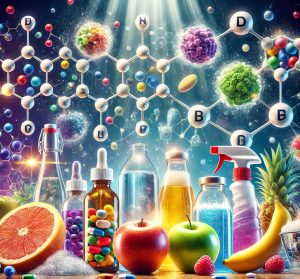The Conductance of Electrolytes: A Detailed Overview
Electrolytes, substances that dissociate into ions when dissolved in water, are central to the study of chemistry and physics due to their ability to conduct electricity. When electrolytes dissolve, they release charged ions, allowing electric current to pass through the solution. Understanding the conductance of electrolytes is essential in various fields, including electrochemistry, biology, and industrial chemistry. This article provides a detailed exploration of electrolyte conductance, examining key concepts such as electrical conductivity, factors affecting conductance, measurement techniques, and real-world applications.
1. Introduction to Electrolyte Conductance
Conductance is a measure of a material’s ability to conduct electric current. For electrolytes, conductance depends on the movement of ions within the solution. When an electrolyte dissolves in water, it separates into positive (cations) and negative (anions) ions. These ions carry electric charges through the solution, enabling the conduction of electricity when an external potential is applied.
The conductance of an electrolyte solution is represented by G, which is the reciprocal of resistance (R) and is given by: G=1/R
The unit of conductance is the siemens (S), where one siemens is equal to one inverse ohm (Ω−1).
2. Molar Conductivity and Equivalent Conductance
Two important terms related to electrolyte conductance are molar conductivity (Λm) and equivalent conductance (Λe).
- Molar Conductivity (Λm): This is the conductance of an electrolyte solution containing one mole of electrolyte, divided by the concentration of the electrolyte. It is represented as:
Λm=κ/c
- where κ is the conductivity of the solution, and ccc is the concentration of the electrolyte in moles per liter. Molar conductivity is commonly used for studying the behavior of electrolytes in dilute solutions, and its unit is S·m2/mol.
- Equivalent Conductance (Λe): This is the conductance of an electrolyte solution containing one equivalent (gram equivalent weight) of electrolyte, divided by the concentration in equivalents per liter. Equivalent conductance was traditionally used, especially in acid-base and redox reactions, though it is less common today with the adoption of molar conductivity as the standard.
As the concentration of an electrolyte solution decreases, molar conductivity generally increases due to increased ion mobility in dilute solutions.
3. Conductivity (κ\kappaκ) of Electrolytes
The conductivity (κ\kappaκ) of an electrolyte solution is defined as the conductance of a solution between two electrodes separated by a unit distance and having a unit cross-sectional area. It depends on the concentration and type of electrolyte, temperature, and solvent used. Conductivity is expressed in siemens per meter (S/m) and is an intrinsic property of the solution that reflects its ability to carry electric current.
Conductivity is measured with a conductivity cell, which applies an electric field across the electrolyte solution, allowing the calculation of conductivity based on the resulting current.
4. Types of Electrolytes and Their Conductance Behavior
Electrolytes are classified as either strong or weak, based on their ability to dissociate in water.
- Strong Electrolytes: These completely dissociate into ions in solution, such as sodium chloride (NaCl) or hydrochloric acid (HCl). Conductance for strong electrolytes is relatively high, and molar conductivity increases slightly with dilution due to reduced inter-ionic attraction.
- Weak Electrolytes: These only partially dissociate in solution, such as acetic acid (CH3_33COOH) or ammonium hydroxide (NH4_44OH). Conductance for weak electrolytes is lower due to fewer ions in solution. Molar conductivity increases significantly with dilution, as more ions are formed at lower concentrations.
The Kohlrausch Law of Independent Migration
For strong electrolytes, the Kohlrausch Law of Independent Migration states that each ion contributes independently to the overall conductance. As a solution becomes more dilute, the molar conductivity approaches a constant value, known as the limiting molar conductivity (Λm0\Lambda_m^0Λm0).
For weak electrolytes, Kohlrausch’s Law helps in determining the degree of dissociation and calculating the limiting molar conductivity by extrapolating data from concentrated solutions.
5. Factors Affecting Conductance of Electrolytes
Several factors influence the conductance of electrolyte solutions:
Concentration
The relationship between concentration and conductance varies based on whether the electrolyte is strong or weak. For strong electrolytes, conductance decreases slightly with concentration due to inter-ionic forces. For weak electrolytes, dilution increases dissociation, significantly increasing conductance.
Nature of the Electrolyte
The type of ions and their charge affect conductance. Multivalent ions (like Ca2+^{2+}2+ or SO42−_4^{2-}42−) generally conduct better than monovalent ions (like Na+^++ or Cl−^-−) due to higher charge.
Temperature
Temperature directly affects the mobility of ions; as temperature increases, ions move faster, increasing conductance. In general, conductance increases by approximately 2% per degree Celsius rise in temperature. Temperature regulation is crucial in experiments to maintain consistent conductance measurements.
Solvent and Dielectric Constant
The dielectric constant of the solvent affects the dissociation of electrolytes. Higher dielectric constants (e.g., water) enhance ion separation and increase conductance, while lower dielectric constants (e.g., ethanol) reduce ion separation, leading to lower conductance.
Ionic Mobility and Size
Ionic mobility, influenced by ion size and charge density, affects conductance. Smaller ions and ions with greater charge densities typically move faster, thus increasing conductance. Hydrated ions (ions surrounded by water molecules) move more slowly due to their larger effective size, reducing conductance.
6. Measurement of Conductance
The conductance of electrolytes is measured using conductivity cells. These cells consist of two electrodes immersed in the electrolyte solution and connected to an AC power source, which prevents polarization of the electrodes.
Conductance Measurement Process:
- Calibration: The cell is first calibrated using a standard solution of known conductivity.
- Measurement: The electrolyte solution is placed between the electrodes, and an AC voltage is applied.
- Calculation: Conductance (G) is calculated by dividing the measured current by the applied voltage.
To determine the specific conductivity (κ\kappaκ), the conductance value is multiplied by the cell constant, which depends on the distance between the electrodes and their surface area.
7. Applications of Electrolyte Conductance
Conductance of electrolytes has wide-ranging applications in both scientific and industrial fields.
Industrial Applications
- Water Quality Testing: Conductivity measurements are used to monitor water purity. High conductivity indicates the presence of dissolved salts and impurities, while low conductivity is indicative of high-purity water.
- Battery Manufacturing: Electrolytes with high ionic conductivity are used in batteries and fuel cells to improve energy efficiency. Lithium-ion batteries, for example, rely on highly conductive electrolytes for efficient charge transfer.
- Chemical Manufacturing: Conductance measurements help monitor reactions, especially in the production of strong acids and bases, where conductance indicates the degree of ionization and the progress of reactions.
Biological and Environmental Applications
- Electrolyte Balance in Biological Systems: Conductance of ions in body fluids is essential for maintaining physiological functions, such as nerve conduction and muscle contraction. Blood and cellular fluids contain essential electrolytes like sodium, potassium, and chloride ions, whose conductance is vital for health.
- Environmental Monitoring: Conductivity measurements help monitor pollution levels in rivers and lakes. High conductivity may indicate the presence of contaminants, such as industrial waste or agricultural runoff, affecting water quality and ecosystem health.
8. Advanced Concepts: Ionic Atmosphere and Relaxation Effect
In concentrated electrolyte solutions, ions influence each other’s movement due to electrostatic interactions, creating an ionic atmosphere around each ion. This interaction leads to phenomena such as the relaxation effect and electrophoretic effect.
Relaxation Effect
When an electric field is applied, ions tend to move towards opposite charges, disrupting the ionic atmosphere. As the ions move, it takes time for the ionic atmosphere to re-establish equilibrium, causing a relaxation effect that opposes ion movement and slightly reduces conductivity.
Electrophoretic Effect
As ions move through a solution under an electric field, they drag surrounding solvent molecules with them, causing a drag effect. This phenomenon, called the electrophoretic effect, slows down ion mobility, particularly in concentrated solutions, and affects conductance measurements.
9. Limitations and Challenges in Conductance Measurement
Despite its usefulness, measuring conductance can present challenges, especially in concentrated solutions. High ion concentrations can lead to complex interactions that deviate from ideal behavior, complicating the interpretation of conductance data. Temperature control is crucial, as even slight fluctuations affect conductance measurements.
For weak electrolytes, determining accurate molar conductivities at infinite dilution can be difficult, as it requires extrapolation. Advanced techniques, such as impedance spectroscopy, can improve accuracy but require sophisticated instrumentation.






